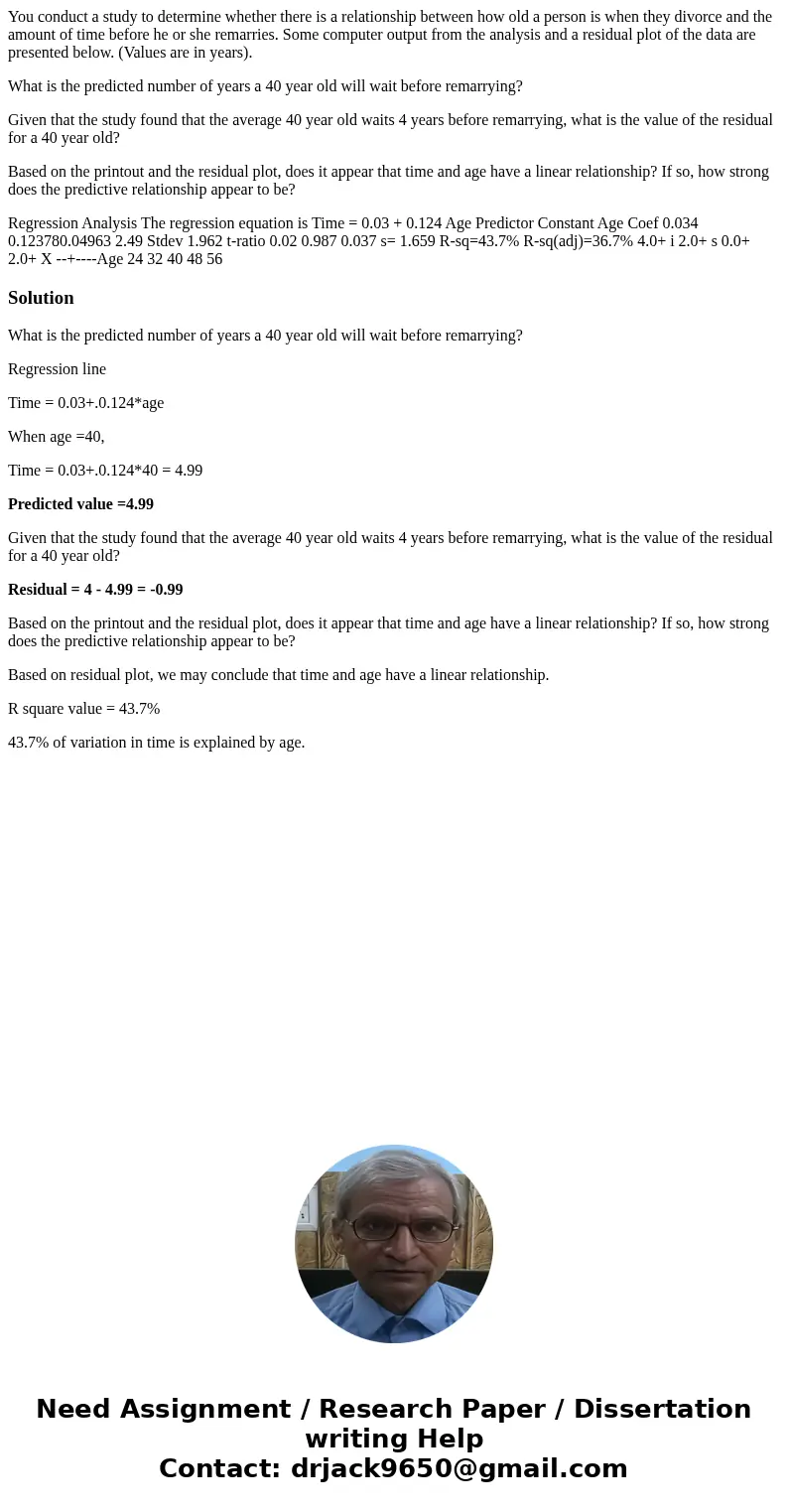You conduct a study to determine whether there is a relation
You conduct a study to determine whether there is a relationship between how old a person is when they divorce and the amount of time before he or she remarries. Some computer output from the analysis and a residual plot of the data are presented below. (Values are in years).
What is the predicted number of years a 40 year old will wait before remarrying?
Given that the study found that the average 40 year old waits 4 years before remarrying, what is the value of the residual for a 40 year old?
Based on the printout and the residual plot, does it appear that time and age have a linear relationship? If so, how strong does the predictive relationship appear to be?
Regression Analysis The regression equation is Time = 0.03 + 0.124 Age Predictor Constant Age Coef 0.034 0.123780.04963 2.49 Stdev 1.962 t-ratio 0.02 0.987 0.037 s= 1.659 R-sq=43.7% R-sq(adj)=36.7% 4.0+ i 2.0+ s 0.0+ 2.0+ X --+----Age 24 32 40 48 56Solution
What is the predicted number of years a 40 year old will wait before remarrying?
Regression line
Time = 0.03+.0.124*age
When age =40,
Time = 0.03+.0.124*40 = 4.99
Predicted value =4.99
Given that the study found that the average 40 year old waits 4 years before remarrying, what is the value of the residual for a 40 year old?
Residual = 4 - 4.99 = -0.99
Based on the printout and the residual plot, does it appear that time and age have a linear relationship? If so, how strong does the predictive relationship appear to be?
Based on residual plot, we may conclude that time and age have a linear relationship.
R square value = 43.7%
43.7% of variation in time is explained by age.

 Homework Sourse
Homework Sourse